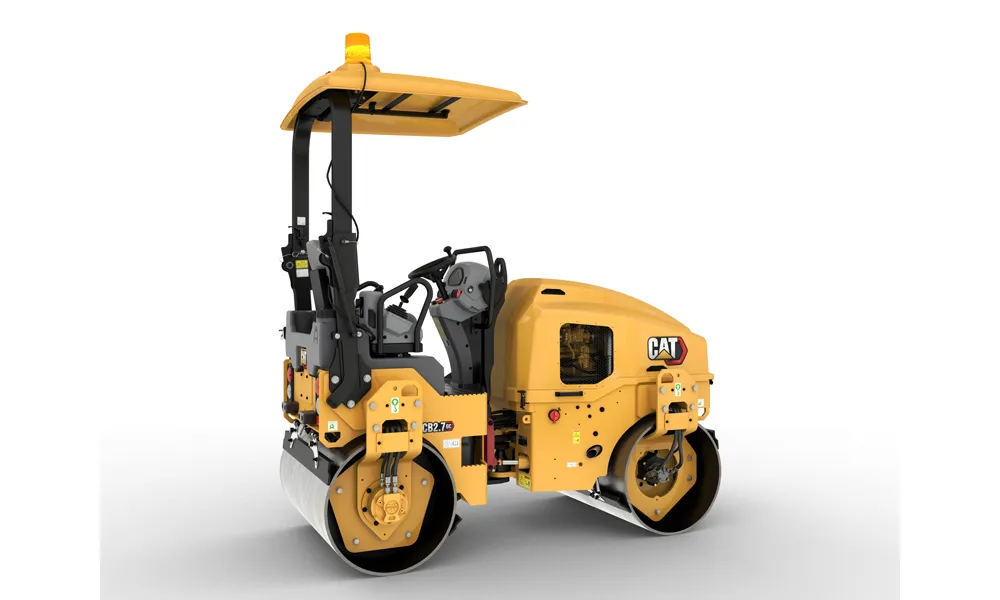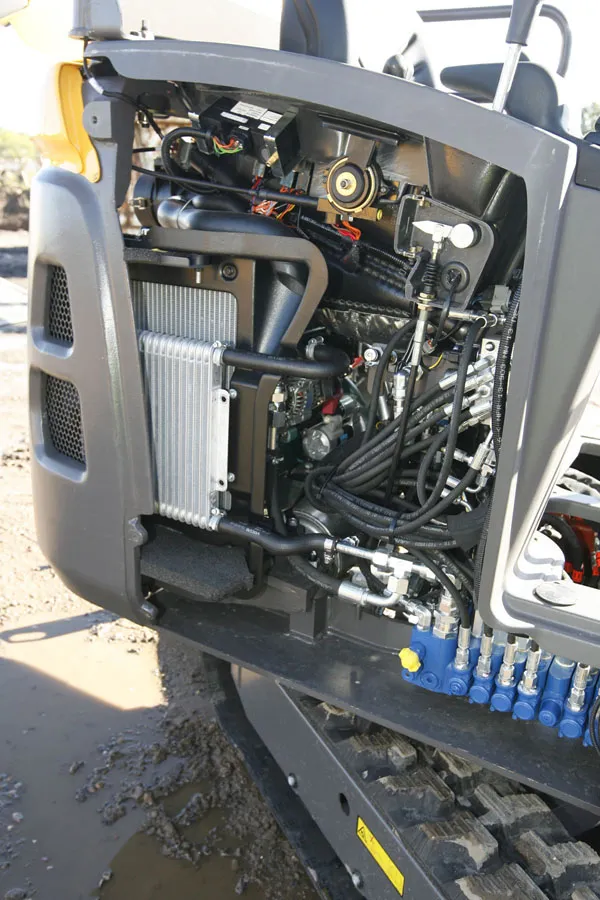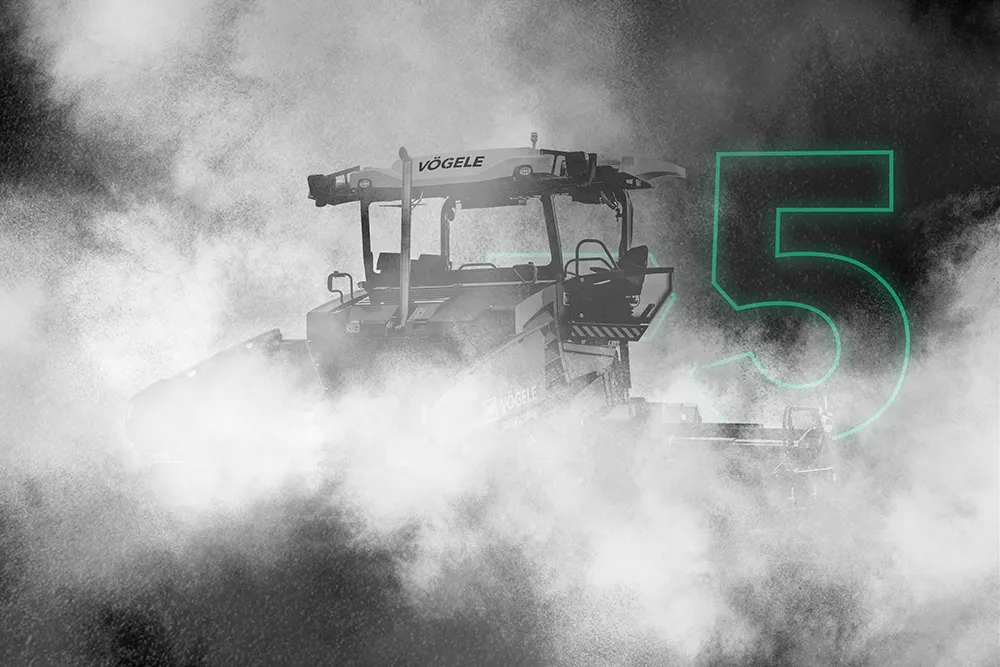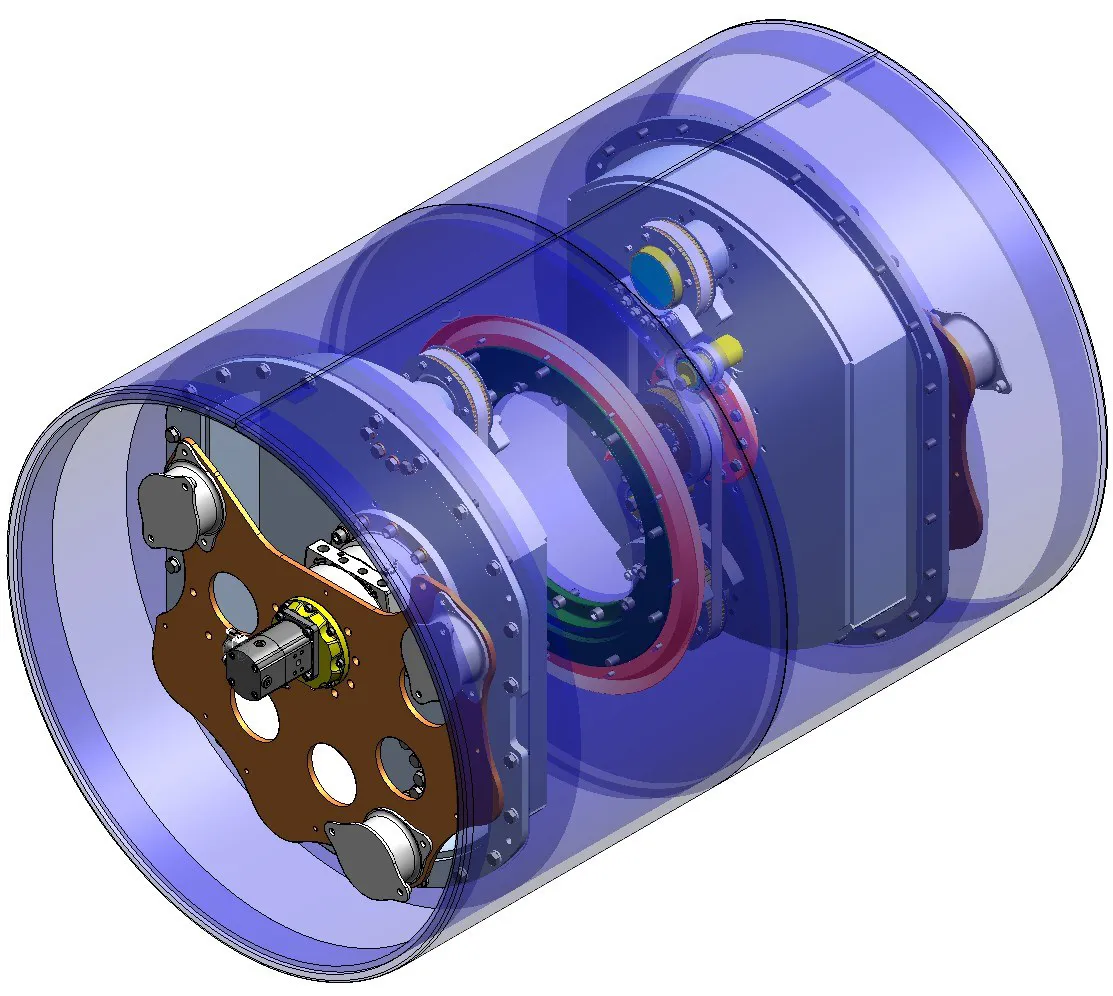
Caterpillar is now offering updated utility compactors for the 2-3tonne class, aimed at customers such as the rental sector. The new CB2.5 GC, CB2.7 GC and CC2.7 CC models benefit from increased productivity and lower owning and operating costs. These replace the earlier CB2.5, CB2.7 and CC2.6 models.
Power comes from a Cat 1.7T diesel that meets Tier 4 Final/Stage V emissions requirements and delivers 18.4kW. Of note is that this engine is smaller than the power unit used in the previous models, its higher power density allowing the same output while using less fuel.
The engines meet the emissions requirements without the need for an aftertreatment system, reducing maintenance needs and service costs. All three machines are said to benefit from advanced hydraulics and sophisticated power management software to ensure high output. And a new auto idle shutdown reduces fuel use as well as machine hours. An important option is the compaction measurement value (CMV), which displays measured material stiffness to the operator, boosting compaction performance, preventing unnecessary passes and increasing consistency. Meanwhile, the vibration circuit has been optimised to further improve efficiency.
Offering compaction widths from 1-1.3m, the new Cat utility compactors feature 720mm diameter drums for a smooth mat finish with thicker, 14mm drum shells for extra durability and more compactive effort due to the increased weight. The machines offer a 50mm drum offset that is said to boost compaction efficiency when rolling next to kerbs.
Features for the new machines include dual vibration frequencies, increased spray coverage, triple water filtration and spray test modes. Options include a choice of fixed or folding scrapers and bolt-on ballast. The former can be used to prevent material build-up on the drums while the latter also helps the user to increase the weight of the machine of required for specific applications.
The narrow frame design is said to allow improved visibility to the job surface and drum edge. Ground level maintenance access is provided and the machines have single lifting points, allowing the units to be lifted on and off transport trailers or trucks easily. According to Caterpillar, the new models are easy to maintain and simple to operate, with low running costs.








